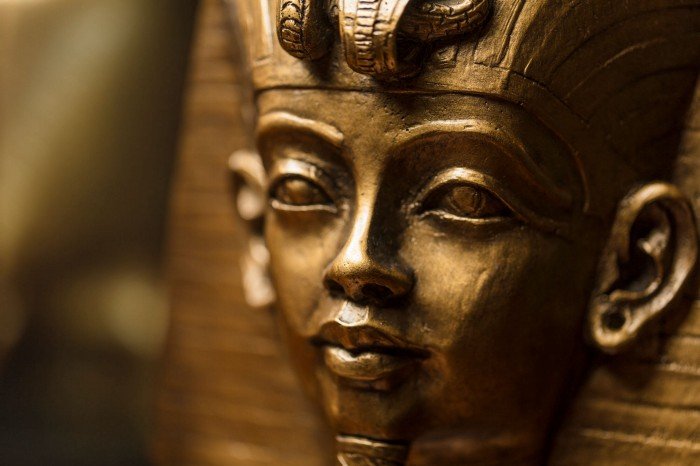What do you know about King Tutankhamun?
 King Tutankhamun
King Tutankhamun
What do you know about King Tutankhamun?
Born over 3000 years old!
Tutankhamun was called Egypt’s most famous pharaoh and that was cemented when his intact tomb was discovered by English Archaeologist Howard Carter in November year 1922, when he found his tomb it was filled with all kind of treasures like a golden throne, crown and cobra, pottery and big chests. Along with a golden burial mask, King Tut’s sandals were also found in the tomb. These had paintings of his enemies on the soles — so everywhere the king went, he trampled all over his foes!
How much do you know about the famous ‘boy king’?
He was named the Boy King because he started his Reign when he was only nine years old!
Tutankhamun, also spelled Tutankhamen and Tutankhamon, original name Tutankhaten
During his reign, powerful advisers restored the traditional Egyptian religion and art, both of which had been set aside by his predecessor Akhenaten, who had led the “Amarna revolution.”
Tutankhamun’s father was a religious radical. He changed the entire religion of Ancient Egypt to worship only the sun god Aten. He did away with over a thousand years of traditional Egyptian religion and forced people to change the way they worshiped. He even built a new capital city in honor of the god Aten called Amarna.
Sadly Pharaoh Tutankhamun died at the age of 18, and his body was mummified, which is how the ancient Egyptians preserved their dead.
In the year 2010 researchers found traces of malaria parasites in his mummified remains and posited that malaria in combination with the degenerative bone disease may have been the cause of death.
The parentage of Tutankhaten as he was originally known remains uncertain, although a single black fragment originating at Akhetaton, Akhenaten’s capital city, names him as a king’s son in a context similar to that of the princesses of Akhenaten.
Medical analysis of Tutankhaten’s Mummy shows that he shares very close physical characteristics with the mummy discovered in KV 55 (tomb 55) of the Valley of the Kings.
Some scholars identify these remains as those of Smenkhkare, who seems to have been coregent with Akhenaten in the final years of his reign; others have suggested the mummy may be Akhenaten himself.
With the death of Smenkhkare, the young Tutankhaten became king, and was married to Akhenaten’s third daughter, Ankhesenpaaton, probably the eldest surviving princess of the royal family.
Because at his accession he was still very young, the elderly official Ay, who had long maintained ties with the royal family, and the general of the armies, Horemheb, served as Tutankhaten’s chief advisers.
By his third year, Tutankhaten had abandoned Tell El Amarna and moved his residence to Memphis, the administrative capital, near modern Cairo.
He changed his name to Tutankhamun and issued a decree restoring the temples, images, personnel, and privileges of the old gods.
He also began the protracted process of restoring the sacred shrines of Amon, which had been severely damaged during his father’s rule.
No proscription or persecution of the Aton, Akhenaten’s god, was undertaken, and royal vineyards and regiments of the army were still named after the Aton.
In addition to a palace built at Karnak and a memorial temple in western Thebes, both now largely vanished, the chief extant monument of Tutankhamun is the Colonnade of the Temple of Luxor, which he decorated with reliefs depicting the Opet festival, an annual rite of renewal involving the king, the three chief deities of Karnak (Amon, Mut, and Khons), and the local form of Amon at Luxor.
I hope you learned more than you knew before.
Thank you for your visit and hope you Like the story.